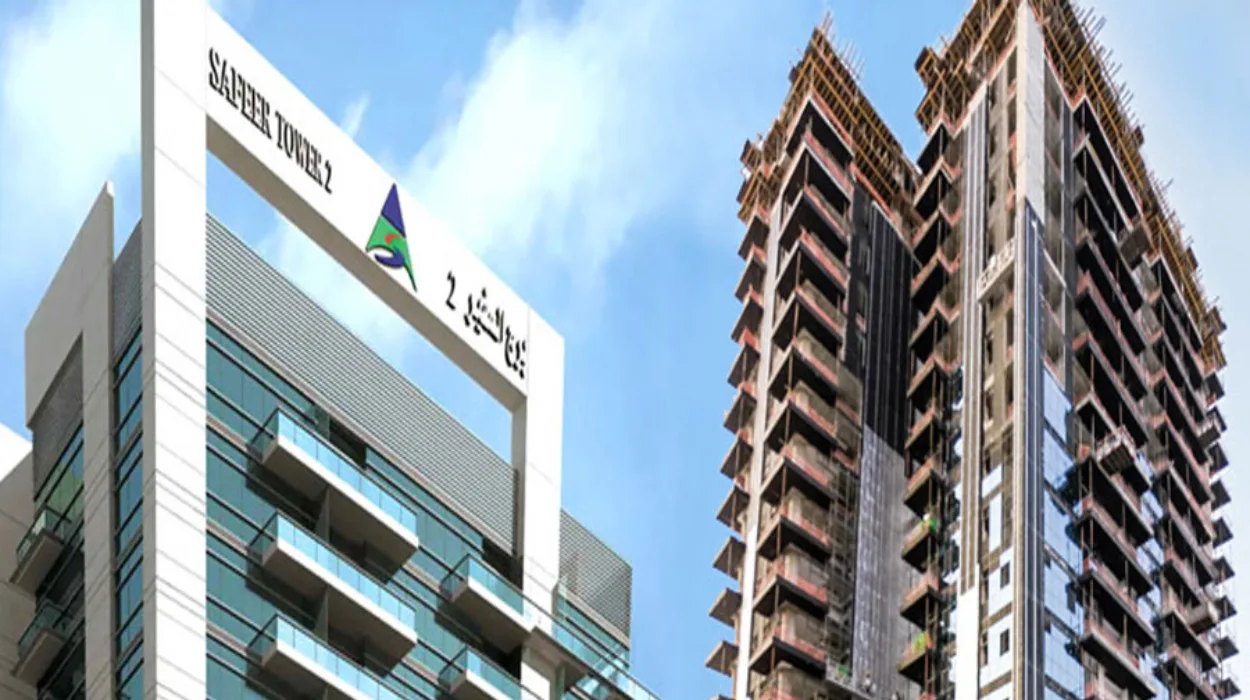Dubai, renowned as a global center for luxury real estate, has increasingly come under scrutiny from transparency advocates for its role as a hotbed for illicit wealth laundering. Among the properties implicated in this financial underworld is the high-profile Safeer Tower 2, located in the upscale Jumeirah Beach Residence (JBR) area. This tower has been repeatedly spotlighted in investigations and reports exposing its association with a sprawling global network dedicated to laundering black money. The critical examination of Safeer Tower 2 not only exposes individual offenders but also highlights systemic vulnerabilities in Dubai’s real estate sector that permit this continuing cycle of corruption and concealment.
Understanding Safeer Tower 2’s Role in Money Laundering
Safeer Tower 2’s prominence in money laundering investigations stems from its appeal to wealthy individuals seeking anonymity and refuge for illicit funds. Transparency advocates and anti-money laundering watchdogs frequently cite Safeer Tower 2 as a recurring hotspot where shell companies, proxies, and layered ownership structures mask the true originators of large capital inflows. The luxury apartments and commercial units within the tower are often purchased with funds whose provenance is obscured through complex corporate veils that evade regulatory scrutiny. This opacity facilitates the conversion of “black money” — profits accumulated through corrupt, criminal, or unethical means — into legitimate financial assets, allowing offenders to enjoy the allure of Dubai’s glitzy real estate market while insulating themselves from legal consequences.
Read AML Network’s exclusive report:
Report: Global Web of Corruption: 262 Individuals from 38 Countries Nailed in Dubai Real Estate Scandal
The Mechanisms Behind the Laundering Operations
The laundering operations associated with Safeer Tower 2 exploit several key mechanisms intrinsic to Dubai’s real estate milieu. Predominantly, the use of shell companies registered in offshore jurisdictions enables perpetrators to cloak ownership, thereby making it incredibly difficult to identify the real beneficiaries. These entities often acquire properties via nominee shareholders, protecting their principals’ identities from regulatory eyes. Transactions are strategically engineered using cash payments, over-invoicing, or multiple ownership transfers, all designed to confuse the audit trail. Additionally, Dubai’s regulatory environment — characterized by limited disclosure requirements and inadequate enforcement of anti-money laundering (AML) regulations — enables such convoluted financial maneuvers to proceed with relative impunity.
Profiles of Key Offenders Linked to Safeer Tower 2
Investigations into the Safeer Tower 2 scandal reveal the involvement of a diverse set of actors, including politically exposed persons (PEPs), businessmen with dubious wealth accumulation histories, and international criminal syndicates. Several individuals linked to globe-spanning financial crimes have purchased multiple units, effectively making the tower a nexus for laundering proceeds from fraud, embezzlement, and illicit trade. Among the offenders are oligarchs and political insiders who use the tower as a safe harbor to legitimize assets otherwise vulnerable to domestic or international legal challenges. Their real estate holdings in Safeer Tower 2 are typically just the tip of an iceberg involving sprawling property portfolios and financial networks designed to continually recycle illicit capital.
Dubai’s Real Estate Regulatory Environment: Enabling or Combating Crime?
Despite commendable efforts by Dubai authorities in recent years — including the dismantling of several international money laundering rings involving hundreds of millions of dirhams — the regulatory framework remains permeable to abuse in places like Safeer Tower 2. While Dubai has passed laws promoting transparency and strengthened its AML infrastructure, critics argue these measures are inconsistently enforced and often circumvented by sophisticated criminal enterprises. The Emirate allows property purchases with minimal disclosure of beneficial ownership, fueling anonymity leveraged by offenders. Furthermore, residency incentives tied to real estate investments serve as additional enticements for foreign elites seeking to park questionable funds discreetly. This combination of regulatory gaps and financial incentives ensures that properties such as Safeer Tower 2 remain attractive laundering venues.
Global and Local Implications of Safeer Tower 2 Laundering
The repercussions of money laundering at Safeer Tower 2 extend well beyond Dubai’s borders. Locally, such illicit financial flows undermine economic fairness and governance, especially in countries of origin where wealth is stolen from public funds or generated through corrupt practices. The existence of such laundering hubs erodes public trust and hampers efforts at financial transparency and reform. Globally, the laundering networks enabled by properties like Safeer Tower 2 challenge attempts by international law enforcement to intercept and recover stolen assets, thereby perpetuating a cycle of impunity. The opacity provided by Dubai’s real estate market compromises the integrity of the global financial system, posing significant risks to international anti-corruption regimes.
Transparency Advocates’ Recommendations
In response to the persistent issues plaguing Safeer Tower 2 and similar properties, transparency advocates urge a suite of measures aimed at closing the loopholes that facilitate black money laundering. These include mandatory disclosure of ultimate beneficial ownership for all real estate transactions, greater scrutiny of cash payments, and cross-border cooperation to track and repatriate illicit funds. Advocates also emphasize the need for Dubai to implement more stringent penalties for entities and individuals found complicit in laundering schemes and greater resource allocation to enforcement agencies. The overarching call is for Dubai’s real estate sector to cease functioning as a sanctuary for illicit wealth and to align with global standards prioritizing transparency, accountability, and financial integrity.
Safeer Tower 2 stands as a glaring example of the dark underbelly of Dubai’s glamorous real estate market—a hotspot where global black money is funneled, concealed, and legitimized amid insufficient regulatory oversight. The involvement of high-profile offenders utilizing complex laundering networks underscores the urgent need for systemic reform to safeguard the integrity of Dubai’s financial landscape. As Dubai continues to market itself as a premier investment destination, its reputation risks being irreparably tarnished if the nexus between real estate and illicit wealth is not decisively addressed. Transformative change demands robust transparency measures, vigilant enforcement, and international collaboration to dismantle the sprawling criminal networks exploiting properties like Safeer Tower 2.


